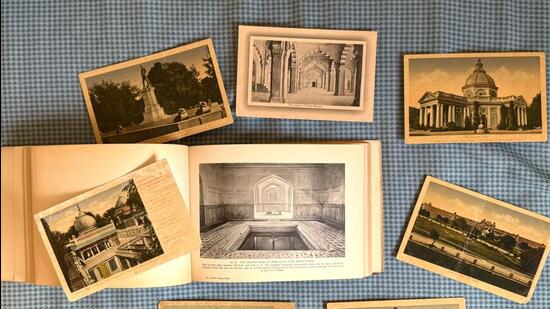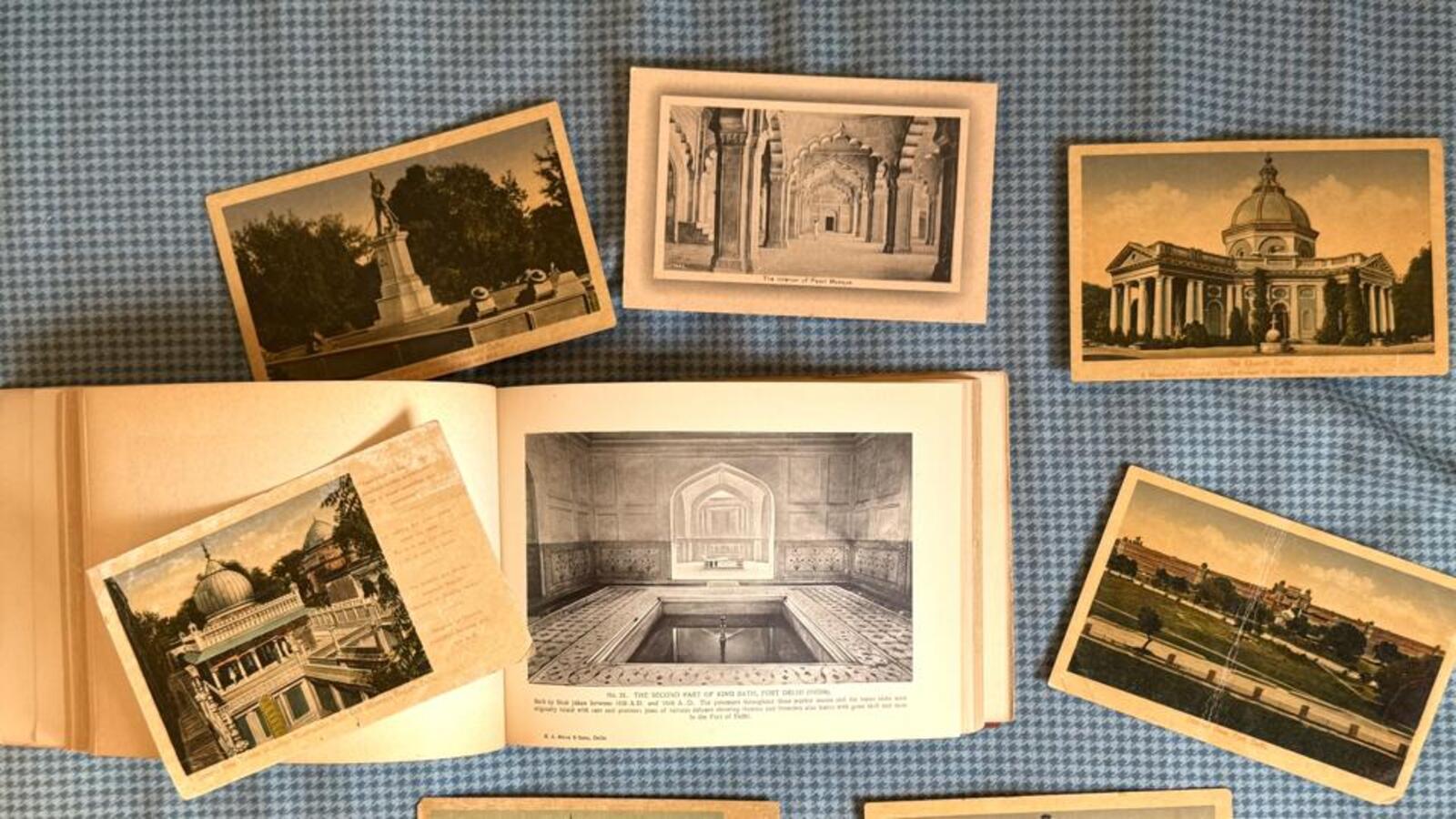May 27, 2025 06:30 AM IST
An unknown 1900 book, ‘Album of Delhi Guide,’ reveals rare photos of Delhi’s timeless monuments before drastic changes, discovered in Normandy.
Thousands of books have been written on Delhi. Historians, novelists, poets, journalists and photographers continue to mine the inexhaustible megapolis, producing even more books. One of these volumes is truly precious. Published around 1900, it is largely unknown, and so rare that it isn’t available even in an online bookstore specialising in such themes. This reporter discovered it recently in a shop for old used books in a most unlikely place: a small town in Normandy, France. The book was originally priced at rupees 5; it was now acquired for 10 euros (around a thousand rupees).
 The book is actually the size of a booklet. The title is simple: ‘Album of Delhi Guide Containing 72 Views.’ (HT)
The book is actually the size of a booklet. The title is simple: ‘Album of Delhi Guide Containing 72 Views.’ (HT)
The book is the size of a booklet. The title is simple: ‘Album of Delhi Guide Containing 72 Views.’ It bears black-and-white photos of the city captured during a pivotal shift in its character. The violent end of the Mughal empire was still in living memory; independence from the British just decades away. The ‘Album’ was published by H.A. Mirza & Sons, the self-proclaimed “Views Photographers.”
H.A. Mirza & Sons was a legendary photo studio in Old Delhi (it was fleeting mentioned on this space a few days back for a separate story). Located in Faiz Bazar, the studio produced India-centric picture postcards of world-class quality. The postcards were printed not in India, but in Germany. The studio’s pictures of the Islamic shrines in present-day Saudi Arabia are considered so precious that a Harvard academic (Professor Ali Asani) co-wrote a paper in 1998 titled ‘Through the Lens of Mirza of Delhi: The Debbas Album of Early-Twentieth-Century Photographs of Pilgrimage Sites in Mecca and Medina.’
The pictures in the Delhi book are surreal. They show familiar forts and tombs, yet these monuments look strangely unfamiliar to the contemporary eye. Maybe because their surroundings have completely changed. Most mysteriously, Delhi is a city of great crowds, but no crowd is to be seen in these bleak, beautiful images. The captions to the individual photos however are entertainingly eclectic. The baoli at Hazrat Nizamuddin’s Dargah is described as “jumping well.”
To an extent, the book echoes the work of a photographer from another great city. French lensman Eugène Atget (1857-1927) is best known for creating a visual record of old Paris and was termed an “obsessed photographer” by a biographer.” H.A. Mirza & Sons concentrated only on Delhi’s timeless monuments, ignoring the changing world of its dynamic streets and people. Even so, this book is a rare visual record of our city before it irreversibly changed, and thus a prized relic.
PS: In the photo, the postcards surrounding the book were acquired years ago from a curio store in Hauz Khas Village.

